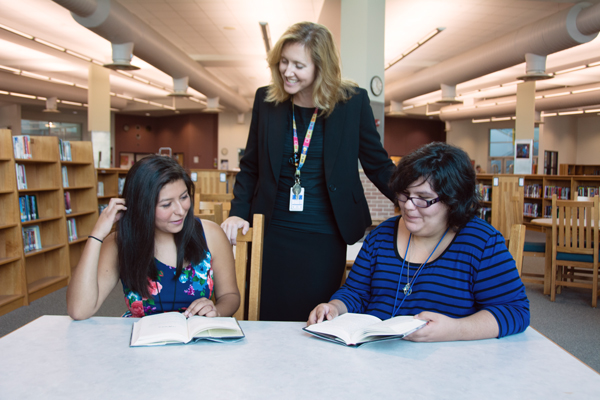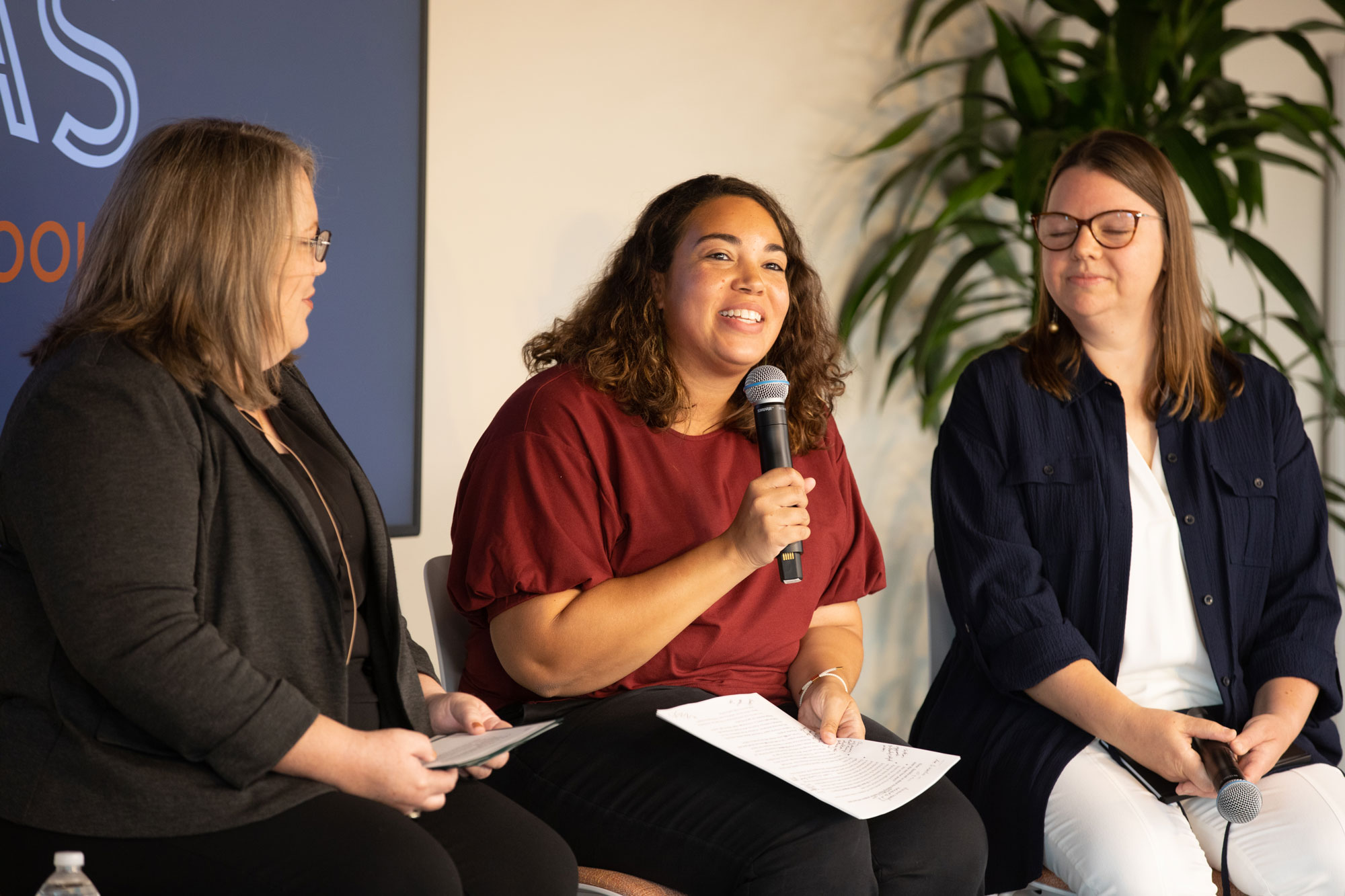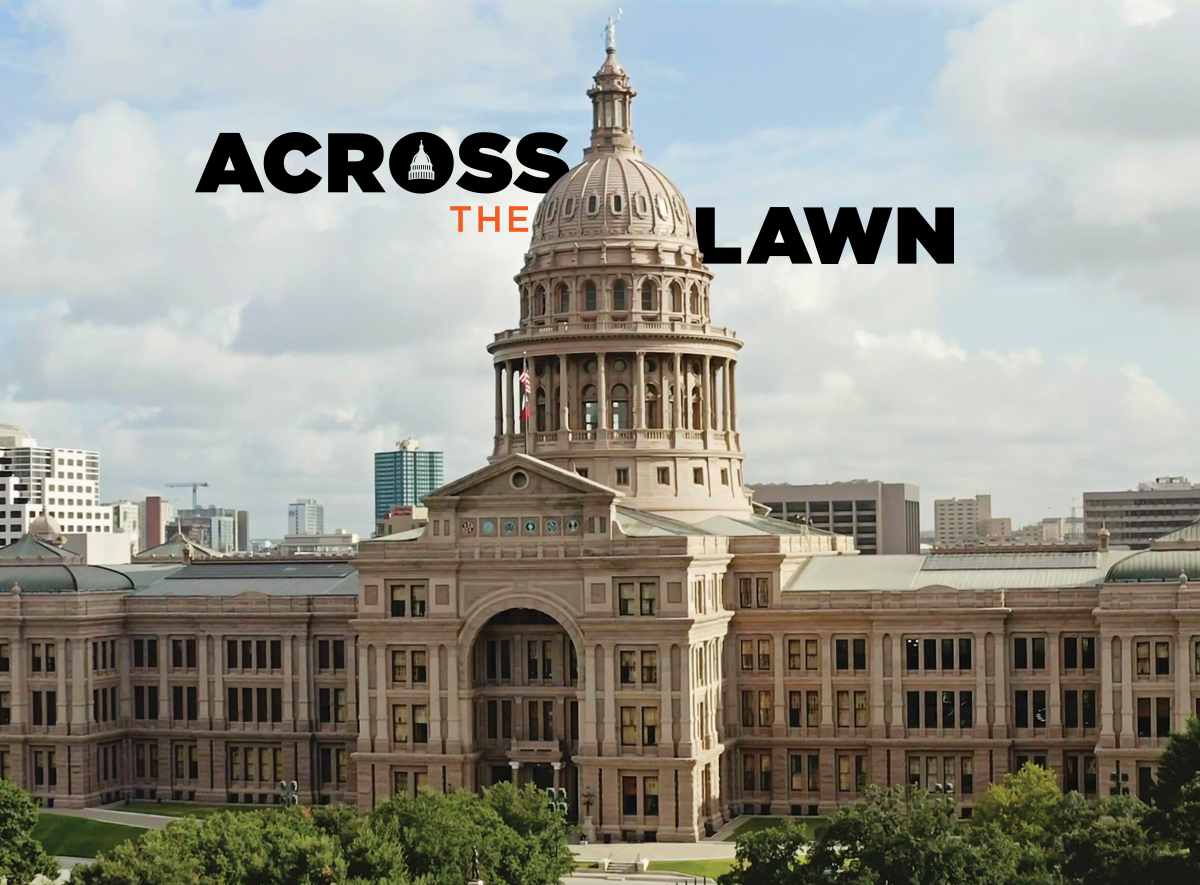
categories
Funding Texas Public Schools

October 12, 2022
Raise Your Hand Texas hosted the third installment of its Across the Lawn event series on September 29. Funding Texas Public Schools focused on the issues school districts face in setting their budgets and the challenges that lie ahead to ensure our students and teachers have what they need to be successful. A panel discussion featured Hawley ISD Superintendent Dr. Cassidy McBrayer, Ted Beard from the Longview ISD Board of Trustees, and Dr. Amanda Brownson from the Texas Association of School Business Officers, moderated by Raise Your Hand Texas Senior Director of Policy Bob Popinski.
The panel brought a unique perspective with a wide range of experience and expertise on school funding from different points of view, but the overarching theme of the discussion was that public schools in Texas need more funding to ensure students receive the education they deserve.
With more than 20 years on the board in Longview, Beard commented that Raise Your Hand Texas hosting this discussion is proof school funding needs to increase in the state of Texas.
“If public education was properly funded the way it should be, we wouldn’t be on this stage right now.”
– Ted Beard
“If public education was properly funded the way it should be, we wouldn’t be on this stage right now,” Beard said. “I really wish it would happen in my lifetime.”
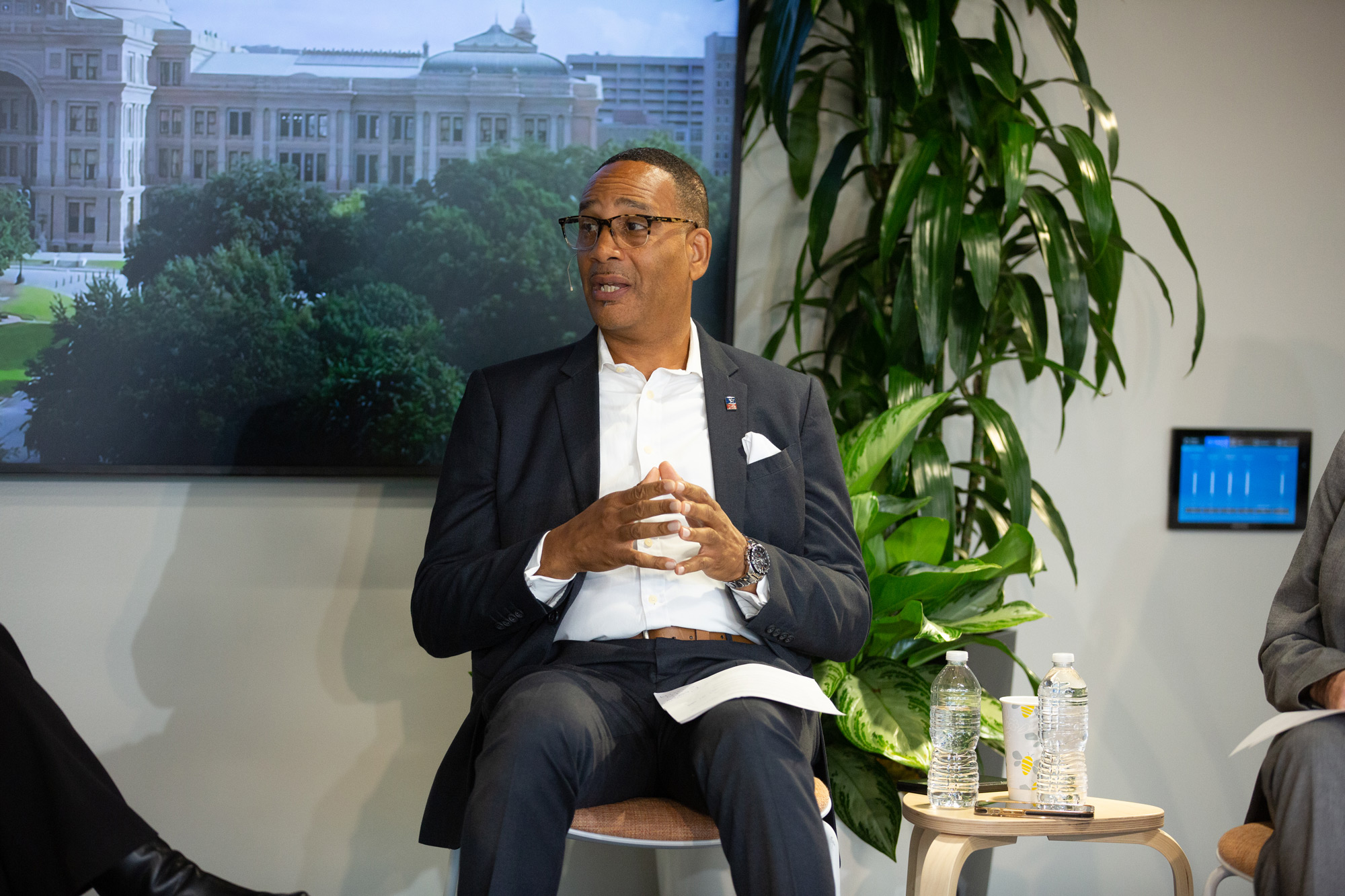
Ted Beard from the Longview ISD Board of Trustees speaks during the Across the Lawn: Funding Texas Public Schools event on September 29 at Raise Your Hand Texas.
Increase Funding for the Students
Leading into the 88th Texas State Legislature in January, Raise Your Hand Texas’ school funding policy recommendations from Raise Your Hand Texas include requesting an automatic annual adjustment to the basic allotment to address inflation and growing needs of schools. The current basic allotment stands at $6,160 per student and has not increased since 2019. Brownson explained that while school districts have the authority to adopt tax rates for enrichment funding, at the end of the day it is the legislature that ultimately determines what the funding level is per student based on a complex set of formulas.
“The basic allotment is the core funding element set by the legislature. It is what the legislature says a child should cost to educate every year if they don’t need any additional services,” Brownson said. “The market decides how much a penny of property tax costs the taxpayer. The school board sets the tax rate, but the legislature decides how much revenue each of those pennies will generate. The legislature really decides how much of that revenue the district gets to invest in its students and its budget.”
The challenge, according to Brownson, is that while tax revenues have increased 20% and inflation has gone up 12% since 2019, the basic allotment has remained stagnant at $6,160.
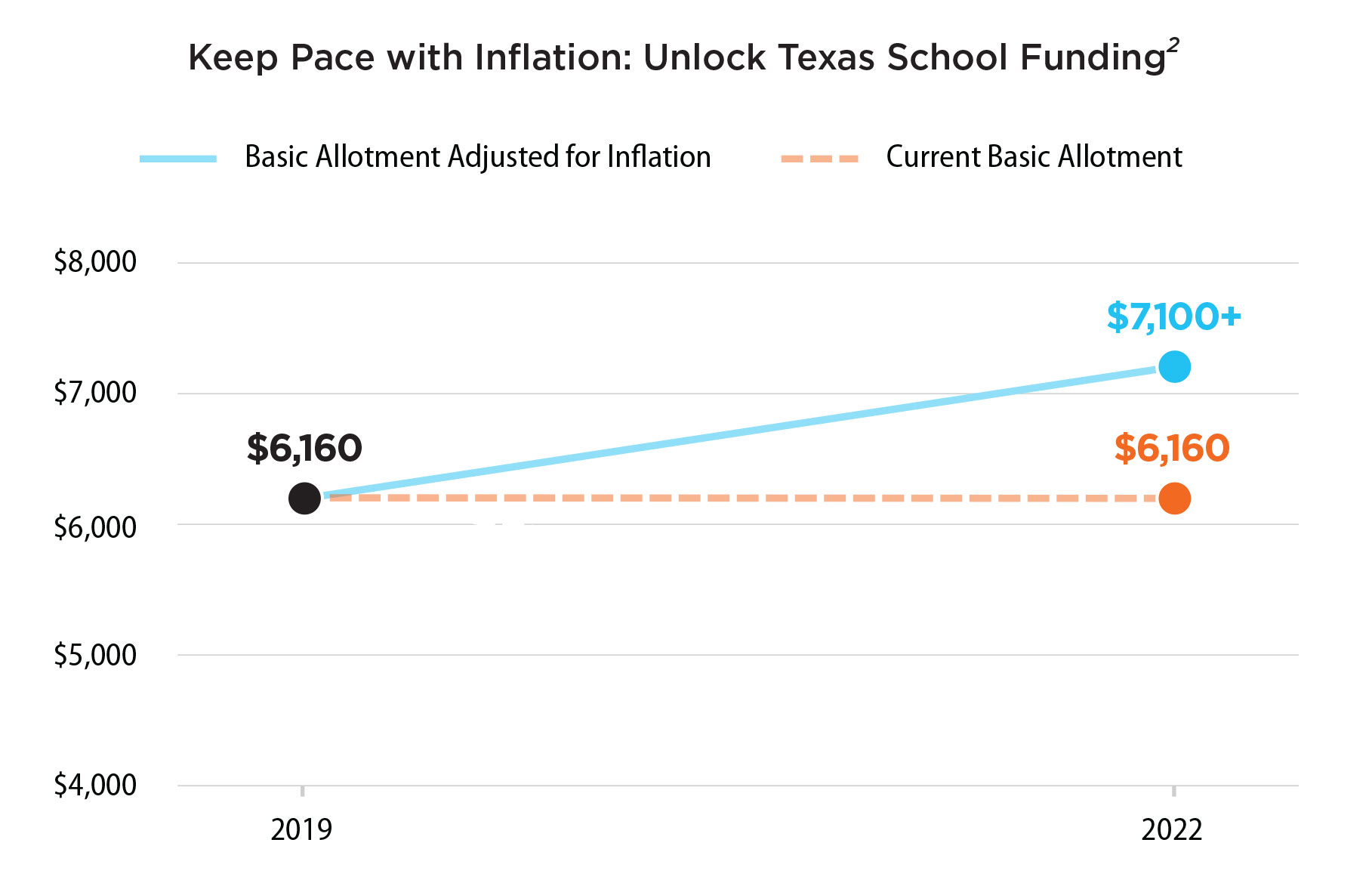
How do school districts make hard decisions when it comes to setting their budgets? What determines where money gets spent, and what gets cut when funding isn’t enough?
“Somebody once told me to put a kid’s face in front of every decision,” McBrayer said. “When it comes down to it, you put kids in front of it, and those decisions that involve students are the ones you protect.”
Protecting money that directly impacts students is key for a rural district like Hawley ISD. For Longview ISD, Beard takes a military approach using his decades of service in the United States Army and battlefield experience in Iraq and Afghanistan to make decisions. He gives great value to data, so he can make choices that will benefit the students because he knows he is impacting their future with every budgetary decision.
“It ultimately ties back to the students,” Beard said. “As a member of the military, if I made an ‘I think’ decision in the military, lives are at stake. As a school board member, if I make an ‘I think’ decision, students’ futures are at stake.”
Increase Funding for the Future of Texas
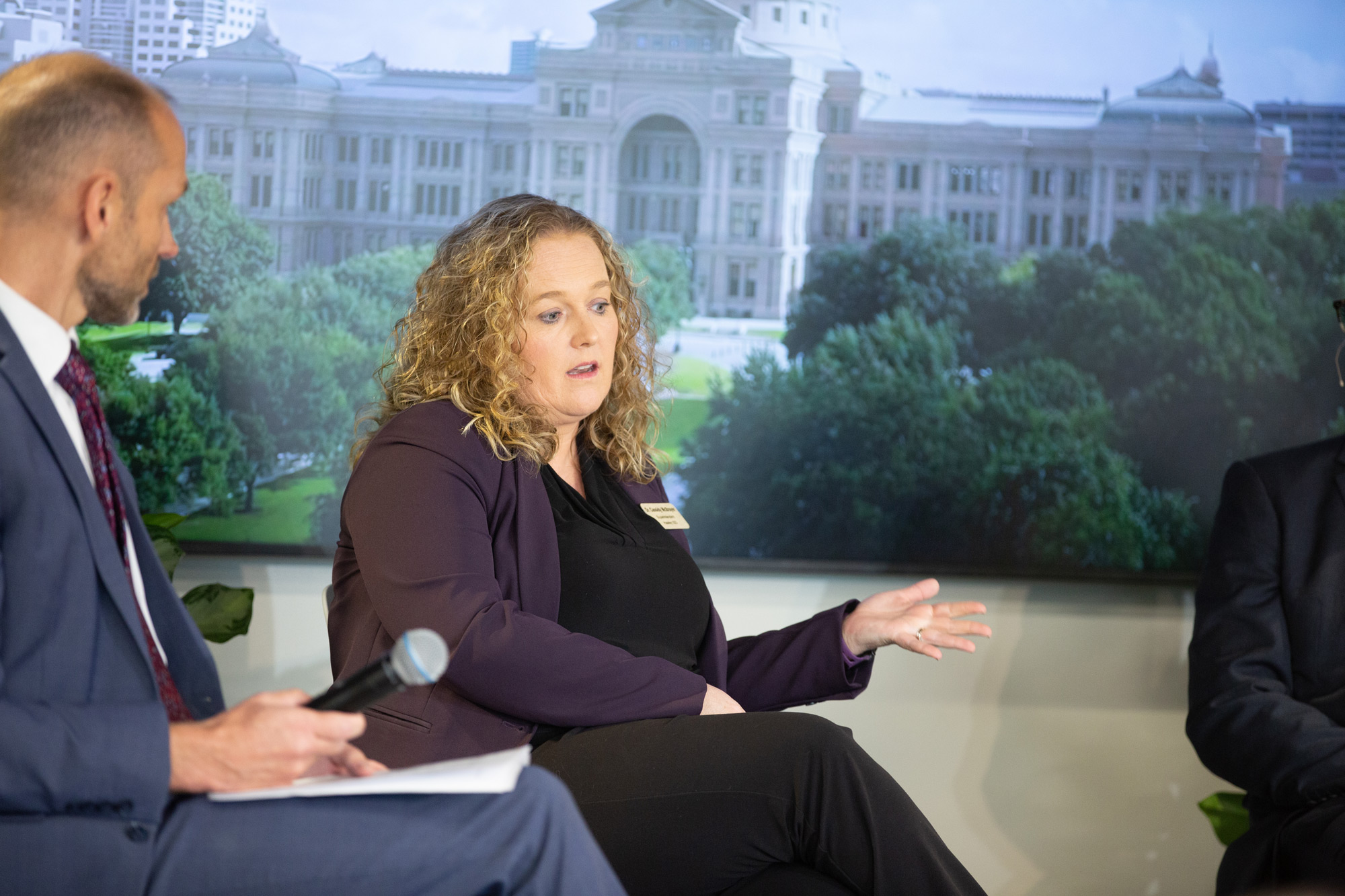
Dr. Cassidy McBrayer, Superintendent of Hawley ISD, speaks during the Across the Lawn: Funding Texas Public Schools event on September 29 at Raise Your Hand Texas.
Students are preparing for a world that will look drastically different than it does today – technological advances, new industries, and jobs that don’t exist yet. Investing more in our students now will directly impact their futures and the future of Texas.
“We’re preparing them for things that we don’t even know what the world will look like, and the only way we can do that is if we provide them with a good education,” McBrayer said.
The future of Texas is in our public schools, and those schools have been thrown a number of challenges since the COVID-19 pandemic. The state and federal government provided funding for schools to adjust and manage through the pandemic, but there are new problems that have been caused by learning disruptions during the pandemic, and some existing problems were exacerbated or discovered through it all as well.
Federal stimulus money helped school districts make up some costs of COVID-related expenses and pay for new programs aimed to provide students with services to make gains to pre-pandemic learning levels. Many programs implemented by school districts have been beneficial to students and teachers, but for many, the funding came through Elementary and Secondary School Emergency Relief Fund (ESSER) stimulus packages. Continuing those services would mean moving funding around or increasing funding. Moving money around in the budget would mean cutting somewhere else in a district’s budget. Brownson said she is concerned that once ESSER funds run out in 2024, schools will no longer be able to pay for services that have proven effective or were essential to their operations.
“It’s hard to overstate how much the pandemic and its aftermath has impacted the school community, and really what they’re craving is some stability and predictability,” Brownson said. “In 30 years of doing this, I have never seen the world throw so many difficult challenges at our school community as I have in the last few years. The nature of those challenges is changing more rapidly than ever as well.”
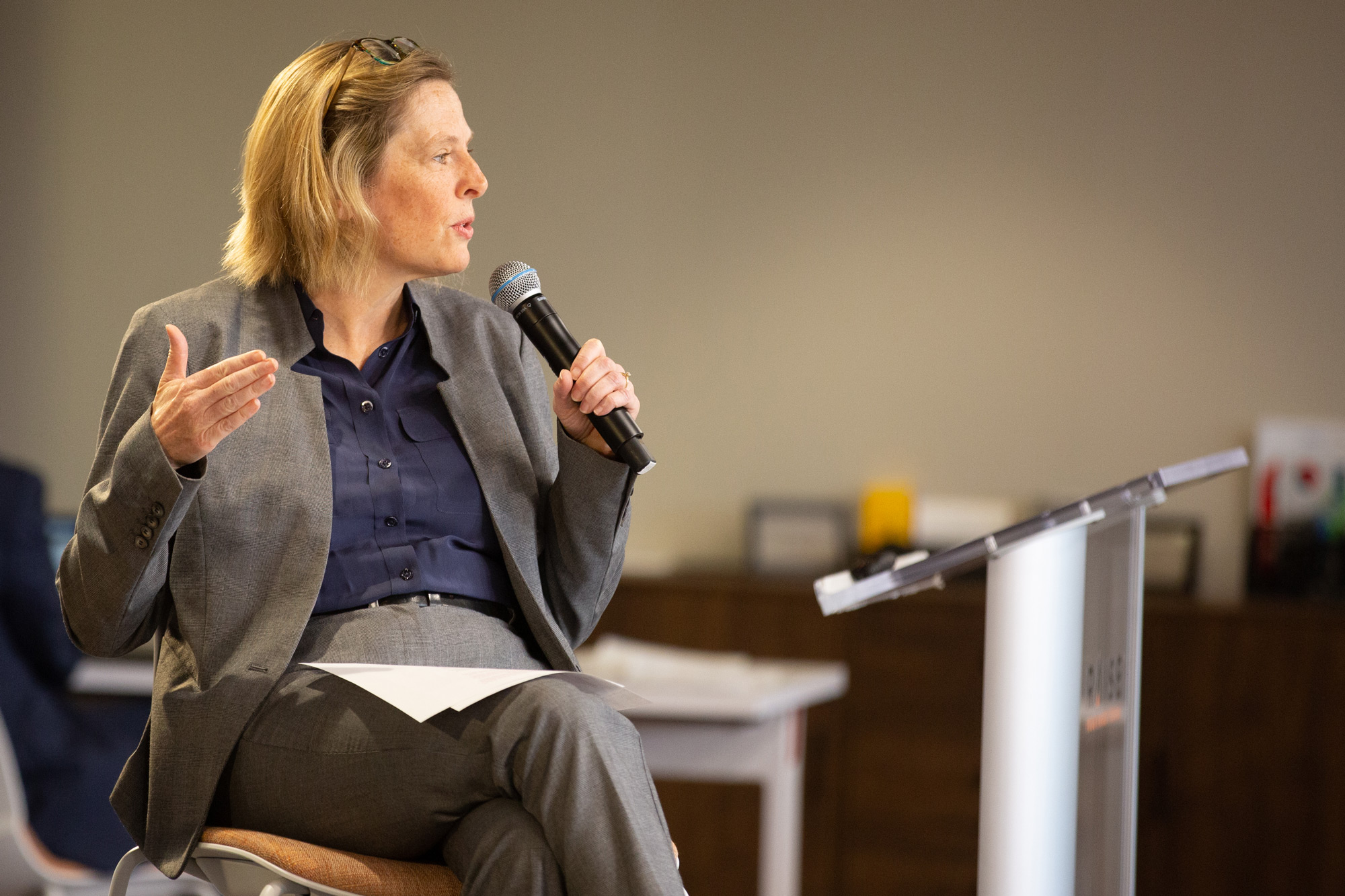
Dr. Amanda Brownson from the Texas Association of School Business Officers speaks during the Across the Lawn: Funding Texas Public Schools event on September 29 at Raise Your Hand Texas.
The challenge for the legislature, according to Brownson, lies in the fact it only meets every other year. That means predicting what schools will need for the next two years and funding schools based on the legislature’s assessments of their needs. As Dr. McBrayer stated during the panel discussion, schools and school districts are not one size fits all. Every school and district has unique needs and situations that need addressing for their respective communities, students, and teachers.
Funding education in a way that allows districts the freedom to determine how to spend their money is needed, and increasing how much money districts have to spend will allow them the ability to invest more in services, staff, programs, and other areas that will directly benefit students and teachers.
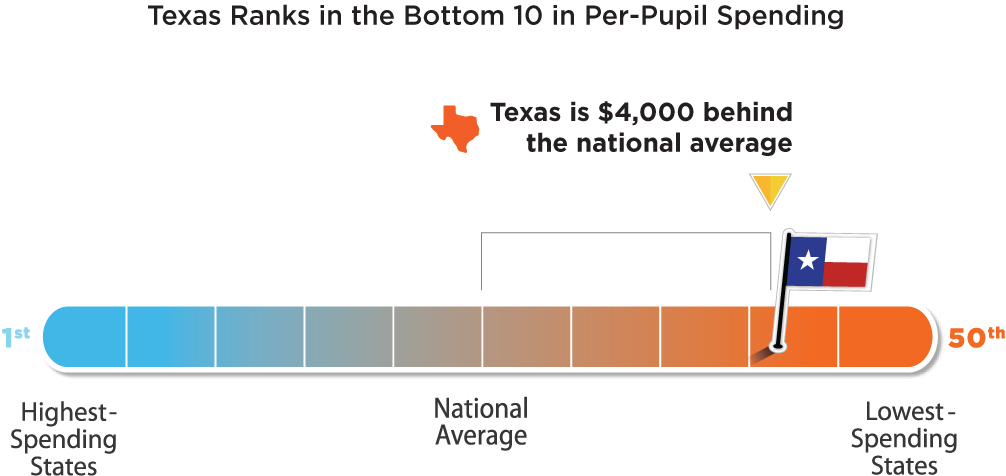
An increase in school funding is necessary in order to ensure Texas remains competitive. As more and more businesses relocate operations into the state and as the population continues to grow, the future of Texas, from an economic standpoint, depends on each child receiving a quality education. However, Texas ranks 42nd in the nation in per pupil spending. That level of investment may be enough to keep our schools operating at status quo, but parents, teachers, principals, and superintendents want more for their students.
“But if you want us to be competitive with the rest of the U.S., and where I feel we need to be, that’s another conversation.”
– Dr. Cassidy McBrayer
“We have to be able to sustain what we are doing right now,” McBrayer said. “But if you want us to be competitive with the rest of the U.S., and where I feel we need to be, that’s another conversation.”
If you’d like to attend a future Across the Lawn event, please email Max Rombado, legislative director for Raise Your Hand Texas, at mrombado@ryht.org.
